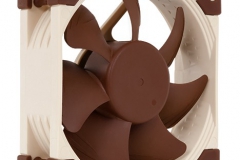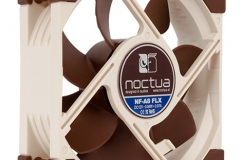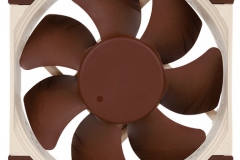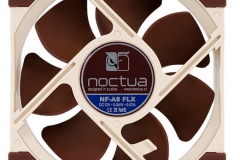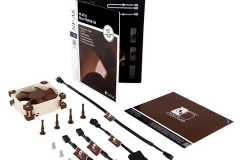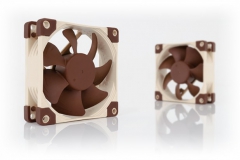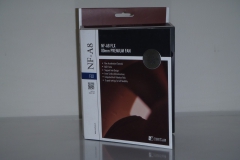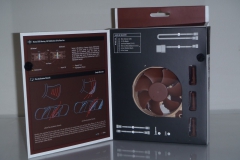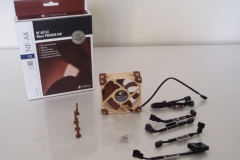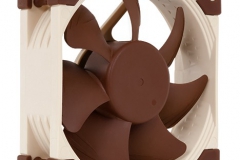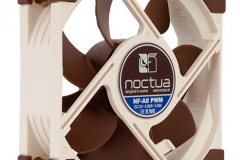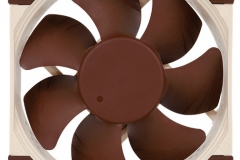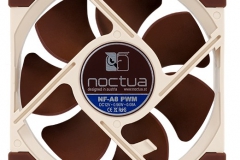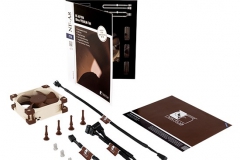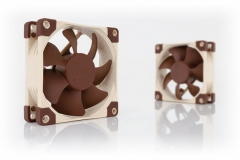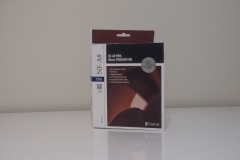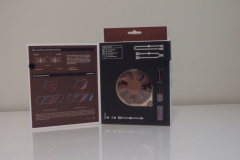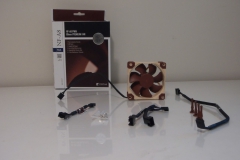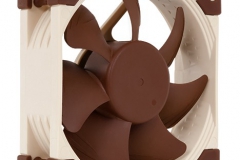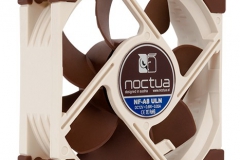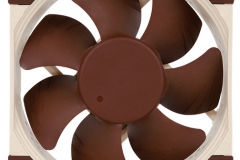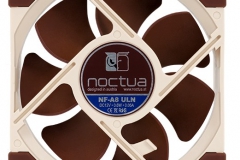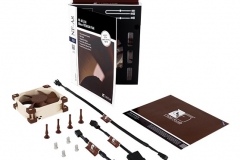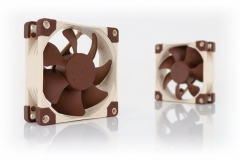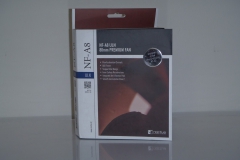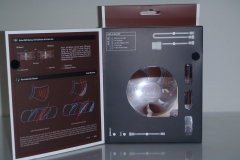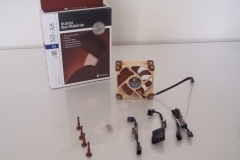NF-A8
80mm fans are almost always going to be case fans. We see the 80mm case fan used as both an intake and an exhaust in the small form factor style of chassis.
As an exhaust, we saw Thermaltake implement dual 80mm fan mounts above the rear IO shield on the Core V1 that we reviewed last year. They had to use 80mm instead of something larger because that’s the biggest fan they can accommodate due to the roof being set just above the full-height PCIE slot. Full size cases tend to use a larger and usually quieter 120 or 140mm case fan in this position.
As an intake, the Fractal Design Node 304 uses a pair of 80mm case fans at the front of the chassis above the power supply and a 140mm fan at the rear.
There are a number of other cases that use 80mm fans, these are just 2 recent examples. Lets not forget about enthusiasts who want to use something small to feed air to their dual graphics cards or push some additional airflow across their overclocked memory or motherboard heat sinks.
The NF-A8 supersedes the older NF-R8 which is still available in a Redux version. Noctua has delivered 3 versions of the NF-A8, the Ultra Low Noise (ULN), the flexible fixed speed (FLX) and the 4-PIN variable speed (PWM) that can be controlled via a motherboard header and some (now standard) motherboard utility software like ASUS Fan Xpert, Gigabyte EasyTune or MSI Command Centre.
NF-A8 FLX
In the FLX pack, you get a Low Noise Adaptor and an Ultra Low Noise Adaptor. It operates at speeds of 2000, 1650 and 1200rpm
At 12v, the NA-8 FLX is so quiet that our decibel meter couldn’t detect it over the ambient room noise of ~18dB(A). Whilst I could sort of hear it up close, when I fitted the LNA the result was a very low hum and with the ULNA, the fan was inaudible. In terms of airflow, the difference was noticeable but even with the ULNA fitted, I could still feel the airflow from 60cm away in a still room.
NF-A8 PWM
The NF-A8 PWM version comes with a Low Noise Adaptor to help set a ceiling rotational speed of 1750RPM. Without the adaptor in place, the fan is capable of 2200rpm. There is also a fan splitter for connecting 2 fans to the same 3 or 4 pin header.
PWM fans are my preference as they allow me to use the motherboard software to control the acoustic and thermal balance of my gaming rigs. Sometimes it isn’t possible due to limited motherboard headers but if I can run my case and CPU fans from my motherboard, I generally will. The NF-A8 PWM is barely audible at the full 2200RPM and at 30cm it gave our decibel meter a nudge from 18.x dB(A) into the 19.x dB(A) range. As soon as the fan speed dropped below 2000RPM, the decibel meter couldn’t register the fan.
NF-A8 ULN
The ULN version is a lower speed NF-A8 and comes with a Low Noise Adaptor to further reduce the noise profile. The fan will spin at 1400rpm without the LNA or 1100rpm with it attached.
I’m not sure why Noctua need to include a Low noise adaptor for this product. Our review sample was silent without the adaptor at 30cm distance whilst still blowing air that could be felt 60cm away. I didn’t really notice much difference with the adaptor fitted acoustically and although the air movement could still be felt 60cm away, there wasn’t as much force behind it. This setup would be ok to move air as long as you weren’t trying to push through a dense fan grill or bunched up cables.
Which one to use?
For overclocking in a compact case, I’d be using the NF-A8 PWM to give me boost in air circulation and penetration power that I needed when pushing the higher temperatures but also providing for quiet running at idle times or under lighter loads – all automatically via the software.
For a small server/NAS setup, I’d probably just stick to a constant speed and use the NF-A8 FLX with a Low Noise Adaptor fitted or the NF-A8 ULN without an adaptor fitted. If I had to contend with messy cables or a dense fan grill, I’d probably go with the NF-A8 FLX version due to it having almost twice the maximum static pressure of the ULN version but if the airflow was unobstructed and the components were low wattage, I would seriously consider the NF-A8 ULN.

